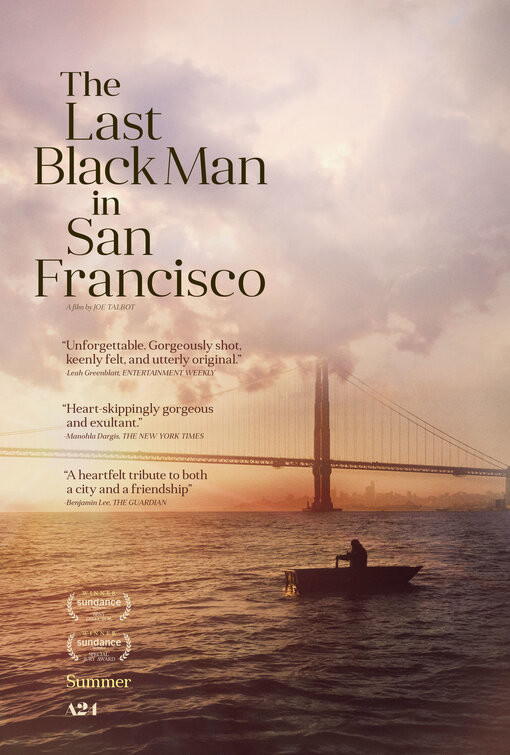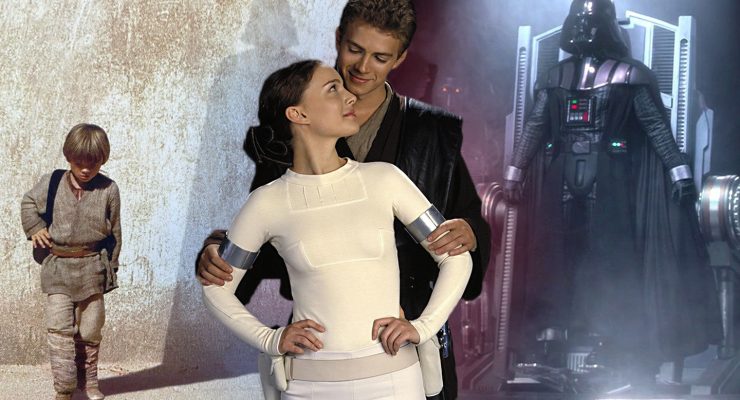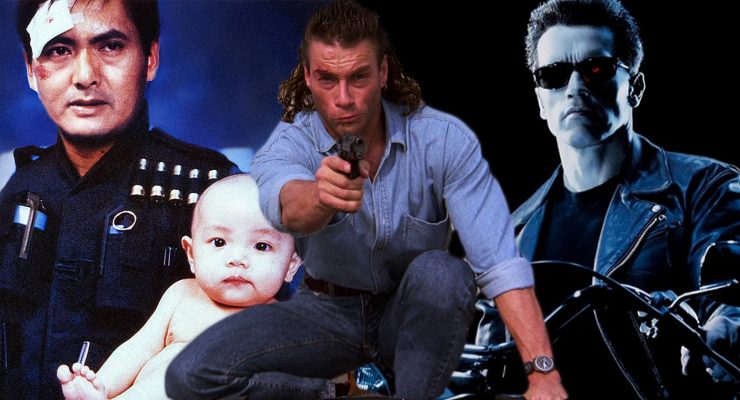The Last Black Man in San Francisco, 2019.
Directed by Joe Talbot.
Starring Jimmie Fails, Jonathan Majors, Rob Morgan, Tichina Arnold, Danny Glover, Mike Epps, Mari Kearney, Tonya Glanz, Thora Birch, and Finn Wittrock.
SYNOPSIS:
A young man searches for home in the changing city that seems to have left him behind.
Director Joe Talbot and his leads Jimmie Fails (a childhood friend of the first-time filmmaker and whose life experience The Last Black Man in San Francisco is based on) and Jonathan Majors are going to be the breakout stars of this achingly moving tale of sentimental value, gentrification, juxtaposed friendships, property, and the highs and lows of modern-day San Francisco, but cinematographer Adam Newport-Berra and composer Emile Mosseri deserve just as much recognition and inevitable end-of-year accolades, if not more.
Unfamiliarity with the everchanging city likely adds a great deal to the atmosphere, but even San Francisco residents will probably be unable to prepare for breathtaking extended shots showcasing Jimmie (yes, actor and character share the same full name seeing as this story is true to life) skateboarding down a steep street incline with the camera panned so far back the scorching sun looms in the background; it’s stunning craftsmanship. And then there’s the music which not only heightens the emotional beats but can switch tones with ease and implement everything from opera to Somebody to Love without ever feeling forced for the sake of being unique.
The writing is not as successful (Joe Talbot co-wrote the script with Rob Richert), seemingly indecisive whether it wants to be quirky and dry or grounded in reality with raw interactions that better reflect what the protagonists are going through (and the latter style yielding authenticity is the better approach here, but what we get is a combination of Jim Jarmusch and Spike Lee with directorial inspiration from Barry Jenkins). Although, in other areas it’s right on the nose; the friendship between Jimmie and Mont (Jonathan Majors, who is not only fantastic throughout the entire movie but in the third act steps out from behind Jimmie to really take command of the story and drive home some of the heavy themes) is about as close as a bond can get based on unconditional platonic love. They are often framed close together, sometimes even sharing the same skateboard, without either characterization giving off a homosexual vibe. Not that that would be a bad thing, but it makes the contrast between the rest of their friends (they insult each other and get wrapped up into dangerous situations) more poignant.
Idiosyncrasies aside (and there’s plenty of weirdness going on here ranging from fitting to too much), the central story is universal (more on that soon). Jimmie performs upkeep on an old Victorian style home despite not living there anymore. As a matter of fact, no black people live there anymore (once Jimmie does luck his way into living in the home, he has a conversation with his elderly white neighbor that is nothing short of hilarious peppered with situational truth), and the stunning photography makes it a point to put the gentrification of San Francisco and all of its districts on full blast. The Last Black Man in San Francisco is a love letter filled with contempt for what the city has become.
It turns out that Jimmie’s grandfather had built the house after serving in World War II, and that he had lived in it until his father could no longer pay for it. As someone who recently moved out from a home I had lived in for over 20 years (basically my entire life), it’s relatable bearing witness to the unwavering attachment Jimmie has to the house. For reasons I won’t spoil (but I will say it sheds light on the depressing reality for homeless people and conveys that our nation should be doing better by them), Jimmie ends up able to squat the house (something his father has taught him how to do over the years), and every opportunity Joe Talbot gets to bring the audience inside, he capitalizes on it by filling the multimillion-dollar abode with meaningful family heirlooms, a sense of history and personal value, its own defining traits (there is a rather lengthy speech detailing the outside appearance of the home), change, and innovative camera angles that capture both the inner beauty of the home and the outside aesthetics that peer into the inside. The home itself is a character, and you feel every ounce of Jimmie’s desire to live there and never give it up.
Then the artsy flick becomes even artsier somehow without overdoing itself; Mont has a knack for theater and is working on putting on a play. Naturally, his work ties into the story itself, but there’s something ambitious about watching elaborate stageplay right within the movie, seamlessly maneuvering into an explosive moment of realization. Even if the bizarre presentation becomes offputting, The Last Black Man in San Francisco is about kindred spirits and limitless love for a treasured home. Sure, the scene blaring Somebody to Love is silly, but Joe Talbot could have chosen any song. He didn’t; the entire movie depicts an unconventional search for love, and it’s beautiful to behold visually and narratively.
Flickering Myth Rating – Film: ★ ★ ★ ★ / Movie: ★ ★ ★ ★
Robert Kojder is a member of the Chicago Film Critics Association and the Flickering Myth Reviews Editor. Check here for new reviews, friend me on Facebook, follow my Twitter or Letterboxd, check out my personal non-Flickering Myth affiliated Patreon, or email me at MetalGearSolid719@gmail.com














